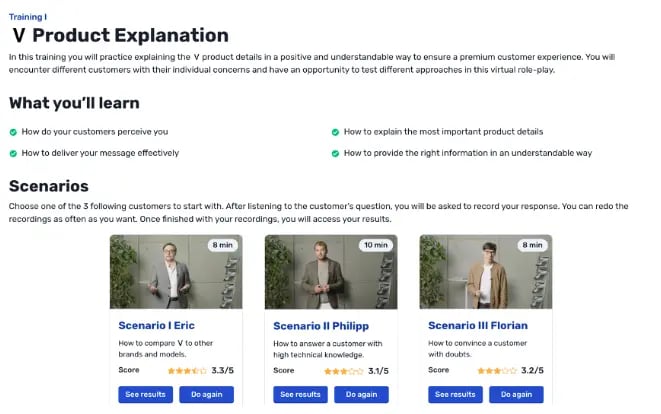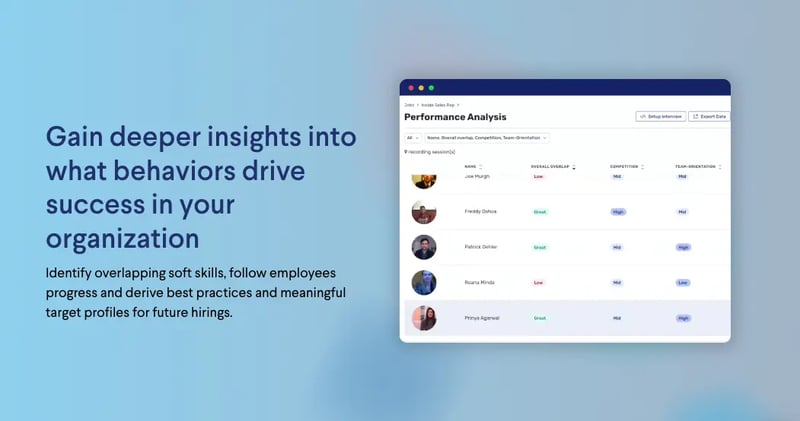The past couple of years has thrown all sorts of curveballs at us.
The business environment we once thought we understood has evolved beyond what is considered traditional, and even the experts are needing to change their ways to keep up with the demands of this new post-pandemic norm.
For organizations who want to adapt to achieve a competitive edge in this new business world, this means curating updated development plans, reconsidering employee development strategies, and adapting overall L&D courses.
So how can HR and L&D leaders adapt their plans to make sure their teams are up to date with learning development?
Why is it more crucial than ever for Organizations to embrace a new learning and development strategy plan for their employees?
What’s in this post?
- What is a learning & development plan?
- Why is now the time to create a learning and development plan?
- Objectives of a learning & development training plan
- How to create an effective learning & development plan
What is a learning & development plan?
A learning and development plan within an organization supports the idea of an organization developing its employee’s capabilities and competencies; essentially embracing a culture of continuous learning.
Through upskilling employees and bridging skill gaps, companies are ultimately enhancing arguably their most important intangible asset, its human capital, and the rewards of adopting a successful learning and development (L&D) strategy are boundless.
Why is now the time to create a learning and development plan?
A number of factors have contributed to the current complex and volatile business environment we are witnessing today. The ongoing digital revolution, and the sudden and unexpected Covid-19 crisis, to name a few, have reshaped the way we work, do business, and communicate.
For example, with the rapid shift to remote online work, how are L&D professionals supporting workers who are less digitally literate?
That's why HR and L&D leaders are focusing now more than ever on upskilling and reskilling and creating effective development strategies for their employees so that their company can come out as market leaders amidst the consistent changes and uncertainty.
In the 2021 LinkedIn report on workplace learning, not only did 66% of L&D pros globally agree that learning and development are focused on rebuilding or reshaping organizations this year, but 64% agreed that L&D shifted from a “nice to have” to a “need to have” function in 2021.
Objectives of a learning and development training plan
So why is it so necessary for organizations to create a successful learning and development plan, especially now? What are the key outcomes that make it so crucial if a company wants to grow and gain a competitive edge in the volatile business environment?
Establishing a learning and development strategy means focusing on the specific professional development objectives and actions that will contribute to your employee’s skills required to successfully perform their job role.
When this is successfully done, companies help their teams develop the required competencies most effectively, leading to them adopting the vital growth mindset amongst their people, which according to Harvard researchers, positively contributes to the prospering of a company.
But it isn’t simply just people's capabilities that improve when HR creates learning and development strategies. The benefits of creating a learning and development plan creep into other areas of the business, for example:
Attracting and retaining talent
A 2020 Work Institute study showed voluntary employee turnover costs U.S. businesses more than $630 billion annually. When acquiring new employees costs companies much more than retaining them, it’s in HR’s best interest to make sure employees feel motivated, welcome, and satisfied in their roles.
Motivating and engaging employees
At the end of the day, an organization’s human capital is a key part of the development process. It’s no secret that organizations that are making investments in the next generation of leaders are seeing impressive returns.
Building an employer brand
Today’s recruitment landscape is a very candidate-driven, highly competitive environment. A company’s identity and reputation are becoming key factors influencing whether or not a skilled worker will apply to work for a company. Therefore, a big goal for more and more organizations is to implement L&D strategies to cultivate a values-based culture and refine their brand, to retain high-quality employees.
Creating a value-based culture
Multiple studies have concluded that highly engaged employees are easy to retain and like to stay associated with the company for a longer period. Engaged employees are productive and facilitate clients in a better way.
Developing people capabilities
People's capabilities are essentially just corporate capabilities, and this is a result of investing in the right L&D efforts. Therefore, these L&D efforts should be more than just supporting the mandatory corporate training, and focus on providing employees with opportunities to learn and develop new competencies.
In fact, companies that invest in their employees and leaders during transformational changes are 2.4 times more likely to achieve their performance targets
How to create an effective learning & development model
So by now, we know the objectives of effective learning and development plan, and why it’s especially crucial for organizations to focus on today, but how can companies create an effective learning and development model that actually works? How to know which learning and development model is right for your employees?
An effective learning and development plan comes in many different forms, but the key objectives it has within an organization remain the same - not simply to assist in the competency of their role, but to inspire employees to achieve their career goals, to broaden their knowledge and to widen their skills base.
In the past, learning and development models meant HR and L&D leaders organized traditional training programs for employees. However, it’s no secret that these passive, workshop-style training programs aren’t too engaging, to say the least. Let’s be honest - you’re probably not sitting at the edge of your seat during a three-hour training program your company sets up once a year, and how much of that information are you really absorbing?
That's why more and more HR and L&D leaders are turning to remote, AI-based training programs for their learning and development plans. These programs are taking the world by storm.
What are the perks? Why is an AI-based training simulation plan better than traditional training plans?
- Remote-worker friendly
- Measure training effectiveness that gives the trainee valuable insight into their soft skill performance, and crucially, ROI
- Video-based simulation means employees can train in the environment of their choice, where they feel the most comfortable
- AI-based training platforms are scalable - they grow as your company grows

Retorio is an AI-based video simulation training platform that is already being adopted by several companies’ learning and development plans, such as by one of Germany’s largest car manufacturers.
By combining video analysis with role-plays of client simulations, Retorio offers interactive training solutions for customer-facing positions, such as sales, consulting, etc where employees can practice training even vital soft skills in a psychologically safe environment, anytime, anywhere.
 Retorio`s interactive client video simulations train employees' soft skills on demand.
Retorio`s interactive client video simulations train employees' soft skills on demand.
Technology advancing at an ever-accelerating pace. Learning and development leaders are well aware of the rapid changes in the business environment, especially over the last few years, but few are taking proactive approaches and adapting their learning and development programs accordingly.
With human capital being arguably a company’s most crucial asset, there is no time to waste when it comes to implementing L&D plans that will enable their capabilities to see success.
Want to see how you could use AI to your advantage?



